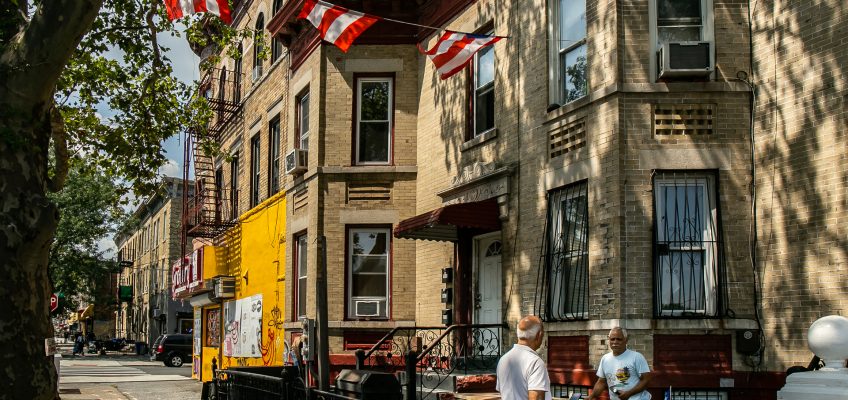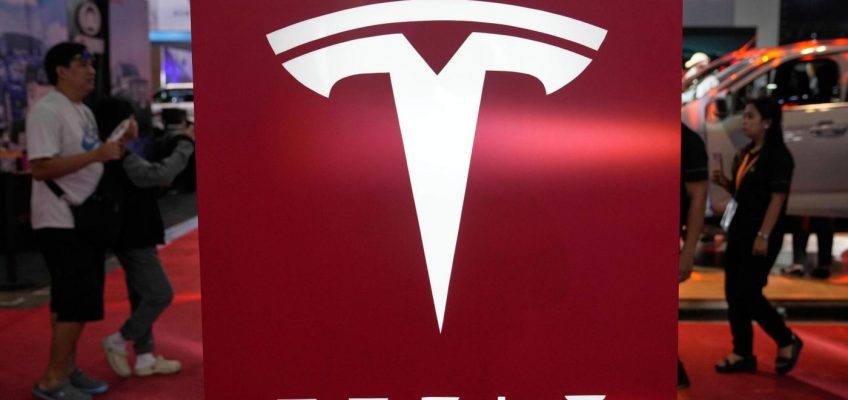On May 20, the city will resume selling the debt of property owners who owe taxes or water, sewer and emergency repair charges—the first lien sale since the pandemic struck. But recent reforms mean homeowners have more options, and more avenues to seek help.
Home in Brooklyn. (Adi Talwar/City Limits)
On May 20, New York City will resume selling the debt of property owners who owe taxes or water, sewer and emergency repair charges—but recent reforms mean homeowners have more options, and more avenues to seek help.
This year marks the first time the city has carried out the tax lien sale since it was paused during the COVID-19 pandemic. In reauthorizing it to resume, the City Council and Mayor Eric Adams passed a series of policies in 2024 intended to “alleviate financial hardship and promote housing stability for at-risk owners.”
This included the introduction of the Easy Exit Program, which allows landlords of one- to three-family homes or condos to delay their inclusion in the sale for up to a year, as long as they live at the residence and meet certain income requirements.
The city also allocated $2 million for outreach and education to homeowners at risk. This includes a partnership with the Center for NYC Neighborhoods, which is offering free, one-on-one sessions with certified housing counselors and attorneys.
“It’s not too late right now,” said Kevin Wolfe, the group’s senior government affairs manager. “There are so many different options for the homeowners that are built into the system, and there may even be other options for you to get financial relief that you’re not aware of.”
This includes potential exemptions for senior citizens, veterans, disabled homeowners and nonprofits, as well as three different payment plan options.
“We encourage them to to reach out to us, talk to us, go over their situation, and then we can help them with a variety of options to work out the best way to get off the lien sale,” Wolfe said.
HELPFUL RESOURCES:
Reach the Center for NYC Neighborhood’s Homeowner Help Desk here, or by calling 646-786-0888. The organization has other advice and useful links here.
Check to see if your property is still on the lien sale list on the Department of Finance’s website.
Find information on exemptions, payment plan options and other FAQs here.
City Limits sat down with Wolfe to talk more about the history of the lien sale, how it works and what at risk owners should know about the process.
This conversation has been edited and condensed for clarity.
What is the tax lien sale, and how did it get started in New York City?
The tax lien sale is the mechanism that New York City uses in order to basically collect delinquent taxes, water debt or municipal debt from from [the Department of Housing Preservation and Development] called the emergency repair liens.
They have certain thresholds that change from year to year. If your taxes have been late for a certain amount of time, or you owe a certain amount of taxes, water debt, or your emergency repair lien is too high…it will turn into a lien. The lien is not recorded on your property, but it is a lien, and at a certain point, your lien will be eligible to be sold on the tax lien sale.
Basically what happens is, the city will sell the lien to a trust; a private investor cannot buy a lien. They sell the lien to the trust, and then the trust basically handles the servicing of the debt, and they will have a third party servicer a lot of times. What will typically happen if the lien is still not paid off after it’s sold, the trust will foreclose the property and they will go through a tax foreclosure process—that’s the process where you lose your home. But different from mortgage foreclosure, tax foreclosure is very hard to defeat. There are far fewer defenses.
New York has not had a lien sale forever. The lien sale originated in the 1990s under the Giuliani era, where there were a lot of properties that were vacant, that were abandoned, that tax delinquency was a big issue [with], and the city really financially had gone through a lot of struggles in order to pay its debts.
The Department of Finance says…that in order for the city to borrow funds from the bond market, they need to have stable sources of revenue. And the bond market needs to see that if New York City says, ‘Well, we have property taxes, and that’s one of our revenue sources’—they need to see that they have enforcement mechanisms to actually collect on the property taxes due. And so the lien sale is that mechanism, and that’s one of the things that gives the bond market confidence and can lower the city’s borrowing costs and increase the amount that the city can borrow from year to year.
How might a homeowner find themselves on the tax lien sale list?
Homeowners are disproportionately on the tax lien sale. About 42 percent of the properties on the lien sale are tax class 1 properties [one-, two- or three-family homes].
We are seeing a plurality of the homes that are on the lien sale are actually water debt, it’s not taxes. If you have a large apartment building and the landlord’s not paying the water and you shut [it] off, then you’ve got to be on the nightly news about how the tenants don’t have water. The city doesn’t want to be in that situation, and so what they’ve done instead is sell the lien. And so it gets homeowners caught up who just cannot afford the water bill.
This is not instances where somebody is $200 behind. You have to be thousands of dollars behind in debt. Very rarely do you have somebody who’s just using $10,000 worth of water every year—typically what will happen is that there’s a major leak. New York’s homes are old; a disproportionate amount of our homes are were built before World War II compared to the rest of the country. These are big pipes, and so if they burst, you have a huge amount of water that’s coming out, and your bills can easily escalate.
Most of these homeowners don’t have a mortgage. You hear a lot in many of the neighborhoods, “I’m house rich, but cash poor.” This is that type of situation where the house is valuable, but the the homeowner does not have the money to pay the taxes, and in many cases, has a tough time accessing capital and unlocking the equity in their home for a variety of reasons.
The tax lien program has been heavily criticized for disproportionately impacting certain communities. What has that impact looked like previously?
The lien sale is very concentrated in who it actually impacts. In majority Black neighborhoods, you’re six times more likely to have a lien sold on your property than a majority white neighborhood; majority Hispanic, Latino [neighborhoods] are twice as likely than a white neighborhood.
If you look at the map—we actually have a tax lien tracker on our website—you could overlay those historic maps where it says “redlining”—it’s the same neighborhoods we’re talking about. Bedford-Stuyvesant, Crown Heights, Flatbush, East New York is a huge neighborhood, the central Brooklyn neighborhoods, Southeast Queens, Jamaica, Hollis, St. Albans. It’s the same areas that historically were redlined, it’s the same areas that were targeted, that had racial predatory lending. It’s the same areas that have suffered from discrimination for decades, almost a century.
As we already mentioned, the city passed policies last year aimed at protecting small homeowners at risk. Are there further reforms you think lawmakers should pursue?
Long term, we would want to see the lien sale abolished for homeowners, for our one- to three- family tax Class 1 homeowners, even with water debt.
This has unfortunately been an instrument of displacement…we’re trying to change that inequity. We totally understand, “I’ve got a big building in midtown or downtown, I’m a slumlord”—that type of thing should not be excused, and the city should make every effort to collect the debt on those properties. But when you’re talking about someone’s home, it’s an entirely different situation.
The reason why people are not paying the loans, the typical reason, is they have a hardship. They have a fixed income. These are senior citizens. They’re in medical debt. Perhaps there was a death in the family and they lost the income. We’ve never come across somebody who’s just like, “I don’t want to pay my taxes.” Everyone wants to figure out how to rectify the situation—nobody’s hiding money. You’re talking about low- to moderate-income people who don’t have the economic means to pay their debt. We want to change that situation and come up with a more equitable way so the city is collecting their debts without displacing homeowners.
Is there anything else people should know?
There are a lot of scams. One of the unfortunate things is that the list of homeowners on the lien sale is made public. Even though New York City does not sell its liens to private investors like Texas, they do make the list public.
What will happen is that you’ll have people who go door knocking and…they’ll scam the homeowner. Again, these are very, very valuable pieces of property, and the scammers know it.
So we definitely encourage homeowners, before you make any decisions on it, to reach out, and get advice from a lawyer.
To reach the editor, contact Jeanmarie@citylimits.org
Want to republish this story? Find City Limits’ reprint policy here.
The post NYC’s Tax Lien Sale is Back. Here’s What You Need to Know. appeared first on City Limits.




